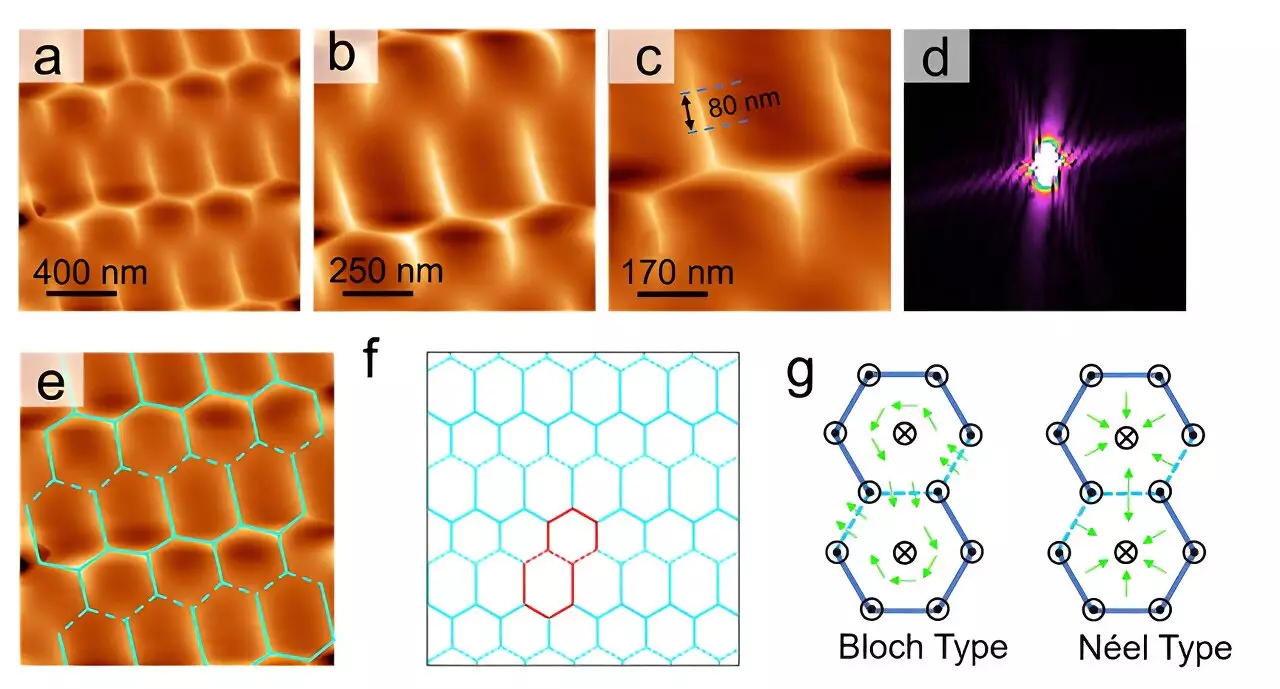Recent advancements in the study of kagome lattices have taken a significant leap forward, thanks to a collaborative research initiative from China. Utilizing a sophisticated magnetic force microscopy (MFM) system along with electron paramagnetic resonance spectroscopy and micromagnetic simulations, the team led by Prof. Lu Qingyou at the Hefei Institutes of Physical Science has made great strides in uncovering the intrinsic magnetic structures characteristic of these unique lattices. The findings were deemed important enough to be published in *Advanced Science* on August 19.
Kagome lattices are known for their distinctive geometric configuration that supports unusual electronic states. This arrangement leads to intriguing physical behaviors such as topological magnetism and unconventional superconductivity, which are essential for applications in quantum computing. The challenge has always been to fully understand the fundamental spin patterns that these lattices govern.
The researchers focused on a binary kagome crystal known as Fe3Sn2, revealing a new class of magnetic arrangements that challenge existing paradigms. Through meticulous experimentation, they identified a broken hexagonal structure that results from the interplay between hexagonal symmetry and uniaxial magnetic anisotropy. These findings elevate our understanding of how competing energies can dictate the magnetic ordering in materials.
To further substantiate their conclusions, Hall transport measurements were performed, which confirmed the emergence of topologically broken spin configurations within Fe3Sn2. Surprisingly, variable-temperature experiments indicated a more complex magnetic transition than previously thought, suggesting a second-order or weak first-order phase transition. This revelation overturns older beliefs that had labeled it as a simple first-order transition.
One of the most critical aspects of this research is the redefinition of the low-temperature magnetic ground state in Fe3Sn2. Contrary to earlier reports of a spin-glass state, the team demonstrated that the material adopts an in-plane ferromagnetic state at lower temperatures. This shift in perspective not only alters the comprehension of magnetic behavior in Fe3Sn2 but also contributes to establishing a new magnetic phase diagram reflecting these findings.
Moreover, the quantitative MFM data highlighted persistent out-of-plane magnetic components at low temperatures, opening new avenues for research. The implications are profound; the team utilized the Kane-Mele model to explain the emergence of the Dirac gap, discrediting prior assumptions regarding the presence of skyrmions in this condition.
This groundbreaking research serves as a catalyst for further exploration into topological magnetic structures. The insights gained could have far-reaching implications for the realms of quantum computing and high-temperature superconductivity. As scientists continue to decode the complexities of kagome lattices and their magnetic behaviors, the potential for revolutionary technologies becomes increasingly tangible. The intersection of theoretical and experimental work in this space offers a promising vista for future discoveries that could reshape our understanding of materials science and condensed matter physics.


Leave a Reply